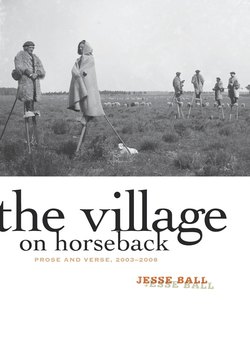Читать книгу The Village on Horseback - Jesse Ball - Страница 40
На сайте Литреса книга снята с продажи.
Arravelli’s “View of Loum,” 1542.
ОглавлениеThere are three walking by the small river,
dividing the world’s belongings
into three. A hatted man in a road-stained cloak.
To the left, a miller bent upon a stick, who seems,
though crippled, to ask no help of his daughter,
she who wanders there
in the composition, the daylight rolled up
like a map against her scarlet hair.
They have been talking some time it seems
without passing beyond that row of hills
the young traveler would have crossed to come
to this crisis, to this dwelling place.
And yes, there is a mill, some four brushstrokes
delicately upon a distant withered lawn. Economy
constitutes this life: the daughter has but one
dress, that she wears; she has but one suitor,
soon to pass away; but one father, hateful,
gathering the plurals of sadness to himself;
one sadness, shared like bread; one world, beyond,
evoked once by the single traveler who has seen her
stark against foreshortened youth. For they grow old,
these wild daughters, bound to fathers
in grim lands. In them grief is a yellow tree, encircled
by a fence of bird-like angels. No shout will cause
this flock to rise to air. And here the light
is never strong enough for the face upon waking,
though it pools where the animals sleep,
and comes radiant at night through unreachable
fields, through windows which, seen with closed eyes,
confirm all dread—elsewhere there is a dance
that many have joined. She winces, and her one hand
is joined by the other, as if it were the painter himself, who,
painting an arm to hold the arm which looked
so hard to bear, had given himself away.
He was this traveler, Arravelli, who lied and yet did not lie, a young man who said he would return.
